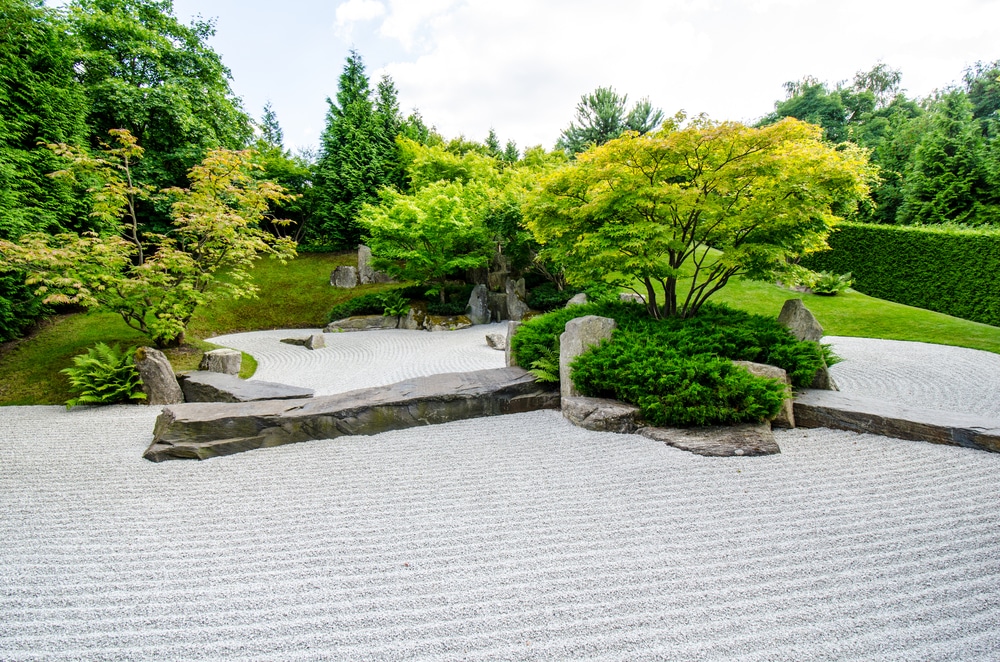Do you appreciate nature and enjoy interpreting the world symbolically? You’re probably a great fit for a Zen garden! Low-maintenance landscaping enthusiasts, on the other hand, should think twice before building one. Zen gardens might appear to be simple, but they can be time consuming. Here’s what you need to know before you start:
What Is a Zen Garden?
Zen gardens were originally crafted by Buddhist monks in ancient Japan (with some Chinese influence). Since their parts represent aspects of nature, they are often referred to as “miniature landscapes.”
The expanse of white gravel raked to create ripples represents ocean waves, and the tall, thin boulders sticking up vertically represent mountains. Shorter, verdant vegetation may be cultivated on or around the “islands” to suggest island plants, while architectural plants can be used as accents.
Tools and Supplies
- White gravel
- Rocks in a variety of sizes and shapes
- Steel garden rake
- Wooden Zen rake
- Shovel
- Hoe
- Tape measure
- String, string level, and stakes
- Tamper
- Landscape fabric
- Edging stones
How to Make a Zen Garden
- Remove anything that is sticking up out of the ground, such as plants, weeds, and pebbles. Also remove the top layer of existing soil from the selected area.
- Check for level by pounding stakes into the ground end-to-end (both lengthwise and widthwise within your rectangle), strung between them, and using your string level.
- Rake out uneven spots, tamp down the soil, and run stone edging around the space. This edging will retain the white gravel.
- Make holes for the rocks you’ll be using to represent mountains and/or islands. It’s a matter of personal preference, but avoid using symmetrical patterns, circles, and straight lines if possible. Also make holes for any trees you intend to plant.
- Install the rocks and plants in their holes. A significant portion of those tall, thin rocks (which represent mountains) should be hidden. They will appear more natural if you insert them like this at the end of the iceberg.
- Lay landscape fabric over the soil, making cuts to accommodate rocks and plants.
- Lay thin layers of white gravel on top of the existing surface. Using a hoe, spread it out. Shape ripples or circles in it with the wooden Zen rake. Maintain these forms by raking them back into the gravel with a Zen-garden rake after they’ve been disturbed by the components.
Our garden services at Legarden Designs handles every element of the process – from the initial design consultation through the project’s completion. We also provide seasonal reviews and yearly walkthroughs. Contact us today!

